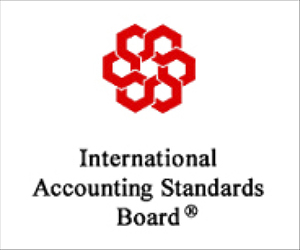
IFRS 9 on financial instruments, which came into force at the beginning of 2018, introduced a new write-down model for financial assets on its impairment component. Being considered as a step forward by financial analysts, the IASB is currently reviewing the model. Explanations by Marie-Pascale Peltre, Vice-Chair of the Accounting Commission, and Antoine Houssin, Head of the Banking-Insurance sector group, with the collaboration of Jean-Baptiste Bellon, former Chairman of the SFAF.
The IASB is conducting a Post Implementation Review (PIR) of IFRS 9 on financial instruments, implemented since January 1, 2018. This review is being carried out in several stages: after the review of the "classification and measurement" component (2020-2022) of IFRS 9, the IASB has begun the review of the impairment component, before embarking on the review of the hedge accounting component.
Replacing the approach prevailing in IAS 39 (incurred losses model), IFRS 9 has introduced a new impairment model for financial assets based on expected losses (expected losses model). This new model is designed to avoid the late recognition of credit losses, as experienced during the 2008 financial crisis. Does it meet the information needs of users, particularly banking sector analysts?
Under IAS 39, impairment losses on loans or held-to-maturity assets were recognized only if there was objective evidence of impairment linked to an event occurring after the loan was granted or the asset acquired, such as non-payment for at least three months or significant financial difficulties. Impairment was then measured as the difference between the carrying amount before impairment and the value of the components deemed recoverable (principal, interest, guarantees, etc.). Impairment losses were recognized in the income statement under "Cost of risk", in the same way as any upward revaluation.
Under IFRS 9, the cost of risk ("expected credit losses") in the income statement comprises three stages, part of which is recorded as soon as the loan is granted or the asset acquired.
- Stage 1, relates to “performing” assets (IFRS terminology): the cost of risk is assessed on the basis of the expected risk of non-payment over a 12-month horizon (probability of default and cost of the default).
- Stage 2, for "underperforming" assets: the cost of risk is assessed on the basis of the risk of non-payment over the entire life of the asset. If credit risk has increased significantly since inception, all estimated losses over the life of the credit are recognized as a cost of risk. The cost of risk is then equal to the present value of expected losses.
- Stage 3, relates to "non-performing" assets, i.e. those already in default: the cost of risk is also assessed on the basis of the lifetime risk of non-payment. In addition, annual interest income is recorded on a reduced basis (the asset net of total provisions recorded).
Financial analysts consider IFRS 9 to be an improvement on IAS 39, despite disparities in the application of the standard and the fact that it has not been tested under severe conditions. They suggest improvements in the degree of granularity of the information (required by IFRS 7) relating to the different stages, in particular for:
- the information described in paragraph 35H of IFRS 7 at operational level (defined by IFRS 8 - operating segments): i.e. by activity (retail banking, investment banking, asset management, etc.), and/or geographically;
- the information described in paragraphs 35I of IFRS 7, including changes in ECL (Expected Credit Loss) on the income statement and balance sheet. Entities would provide details by class of financial instruments. In this context, the SFAF recommends sufficiently granular information, as the operational (business segment) level is often the starting point for financial analysis.
Lastly, the ANC's suggestion to break down stage 2 provisions into provisions for losses over the next 12 months and provisions more than 12 months out would provide more a comprehensive set of information.
